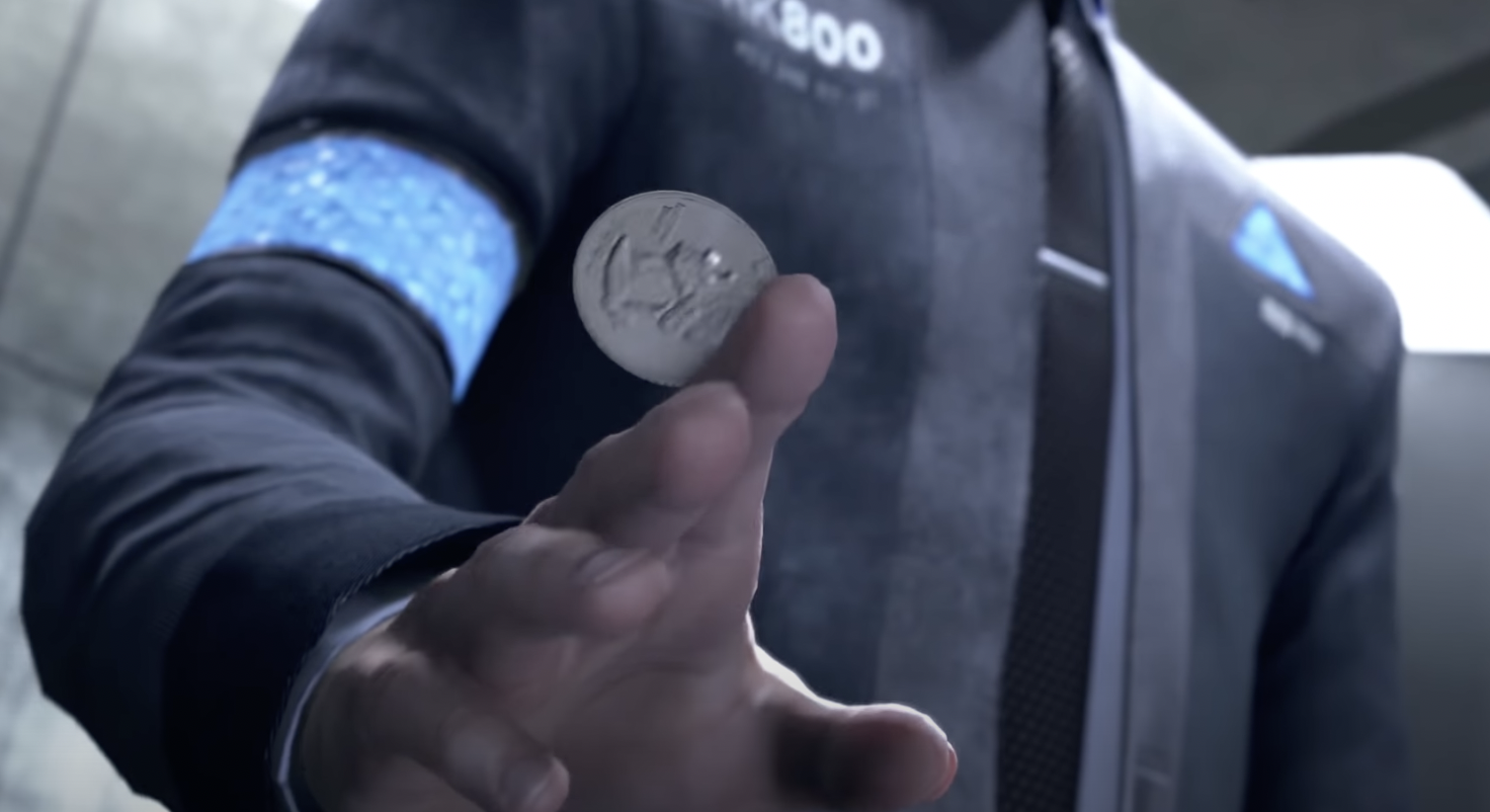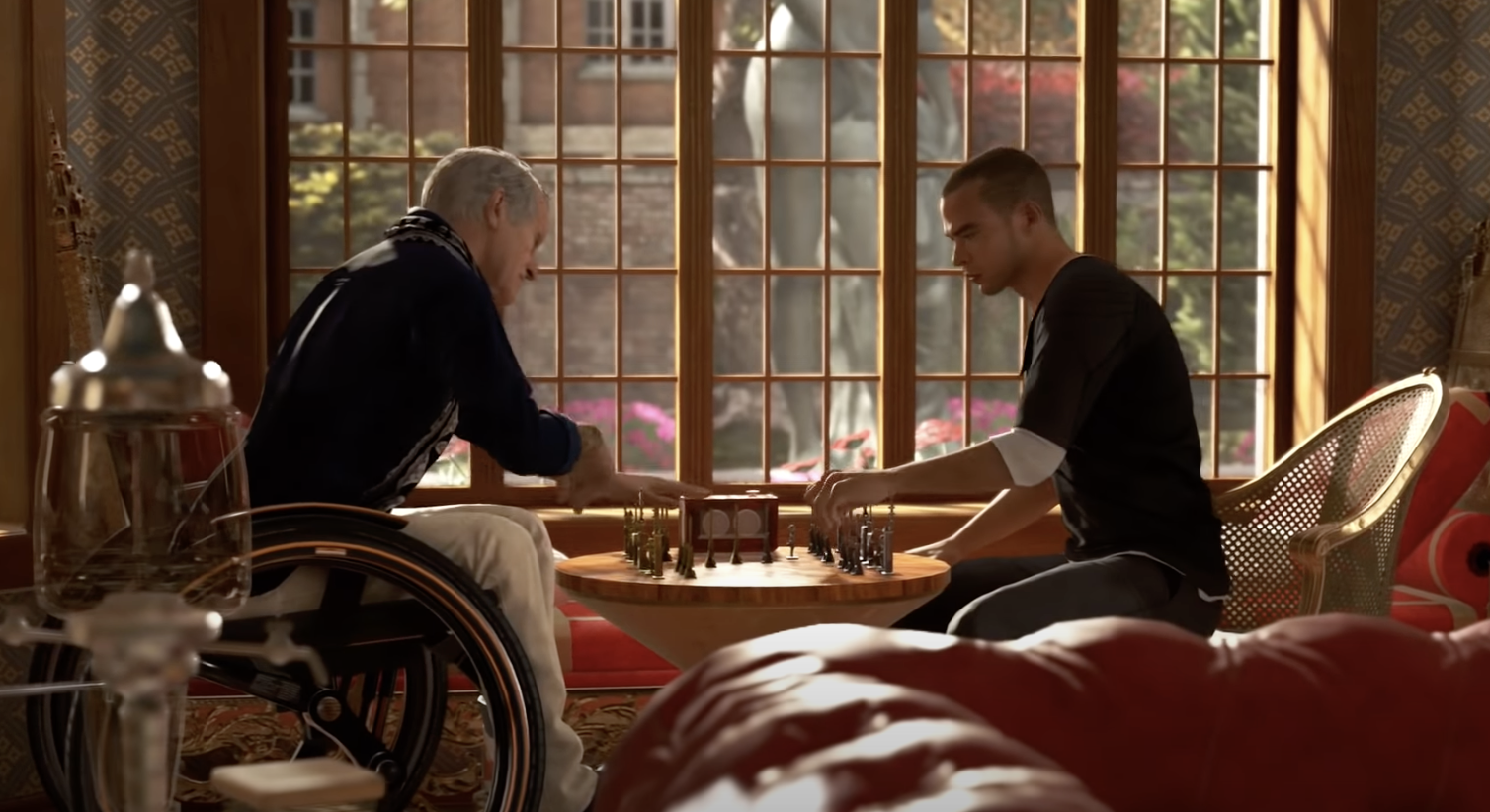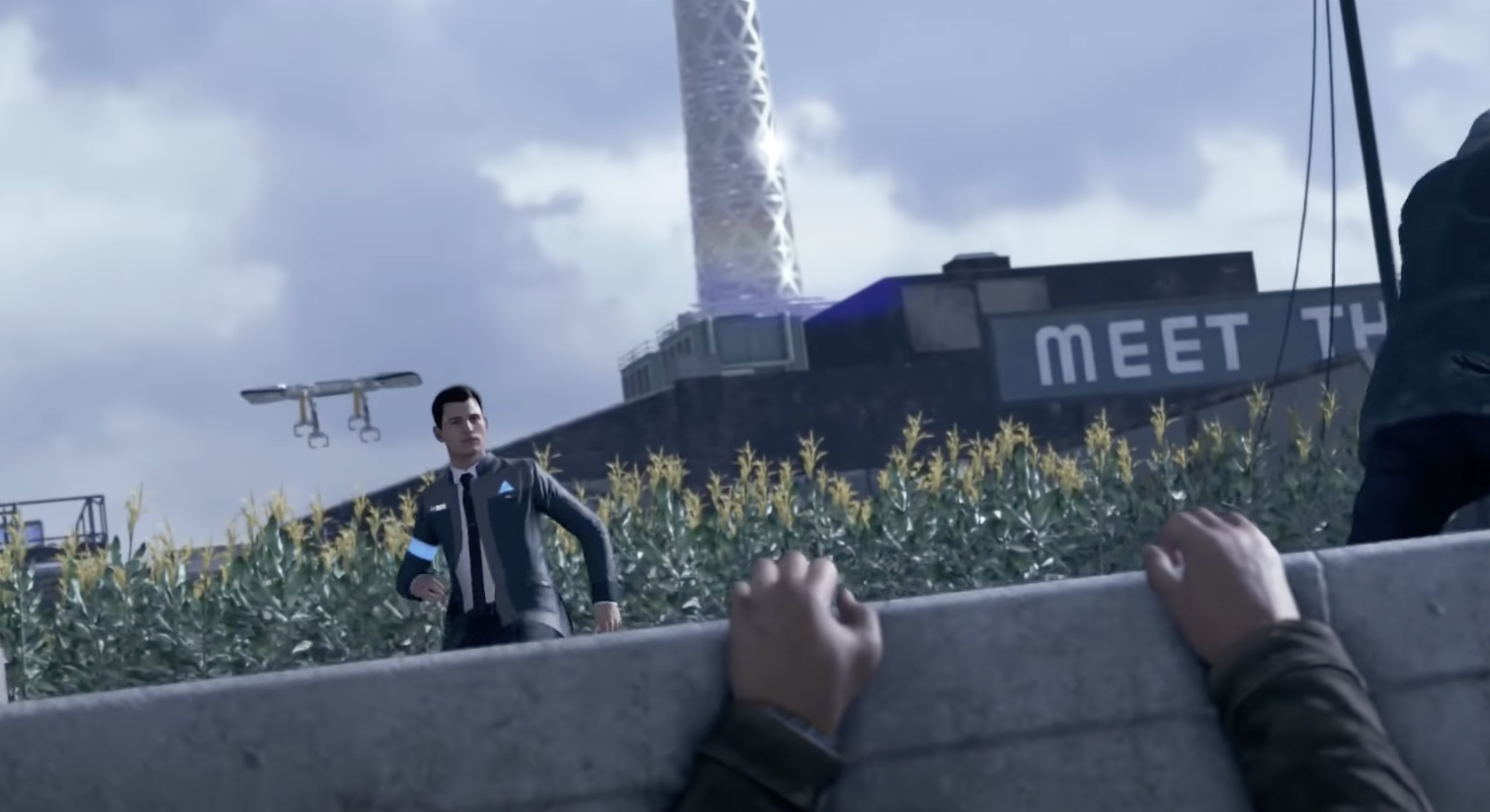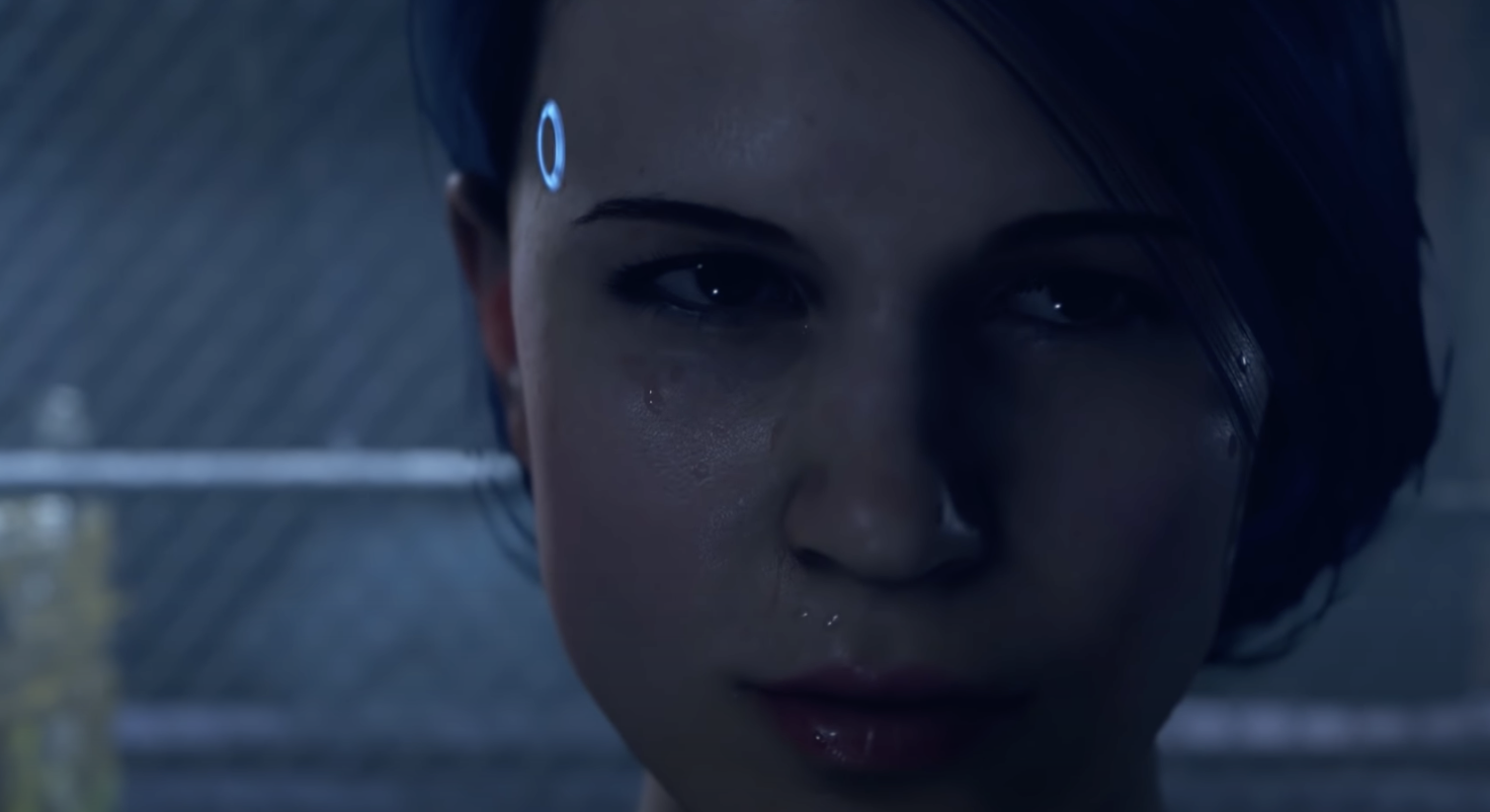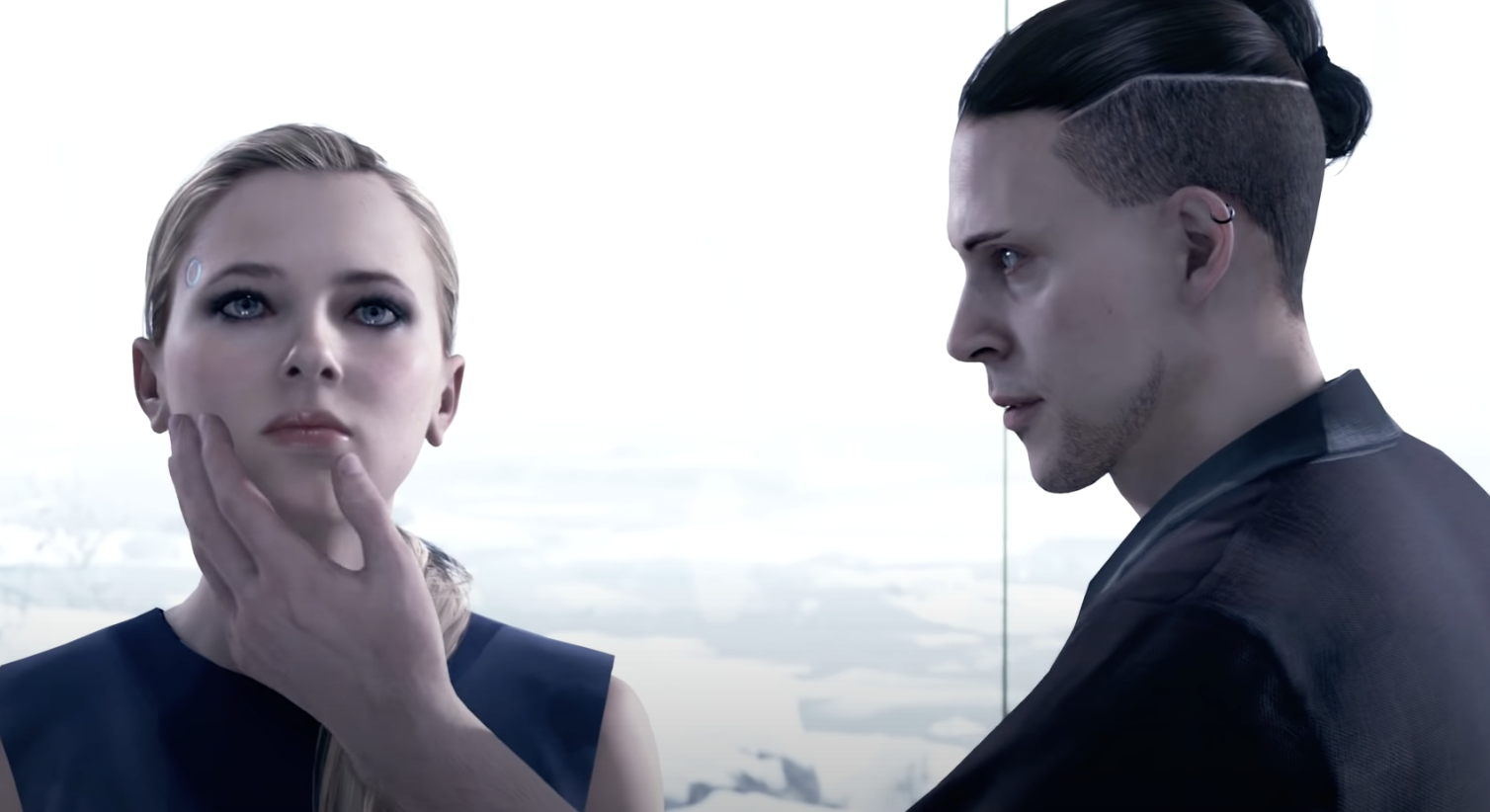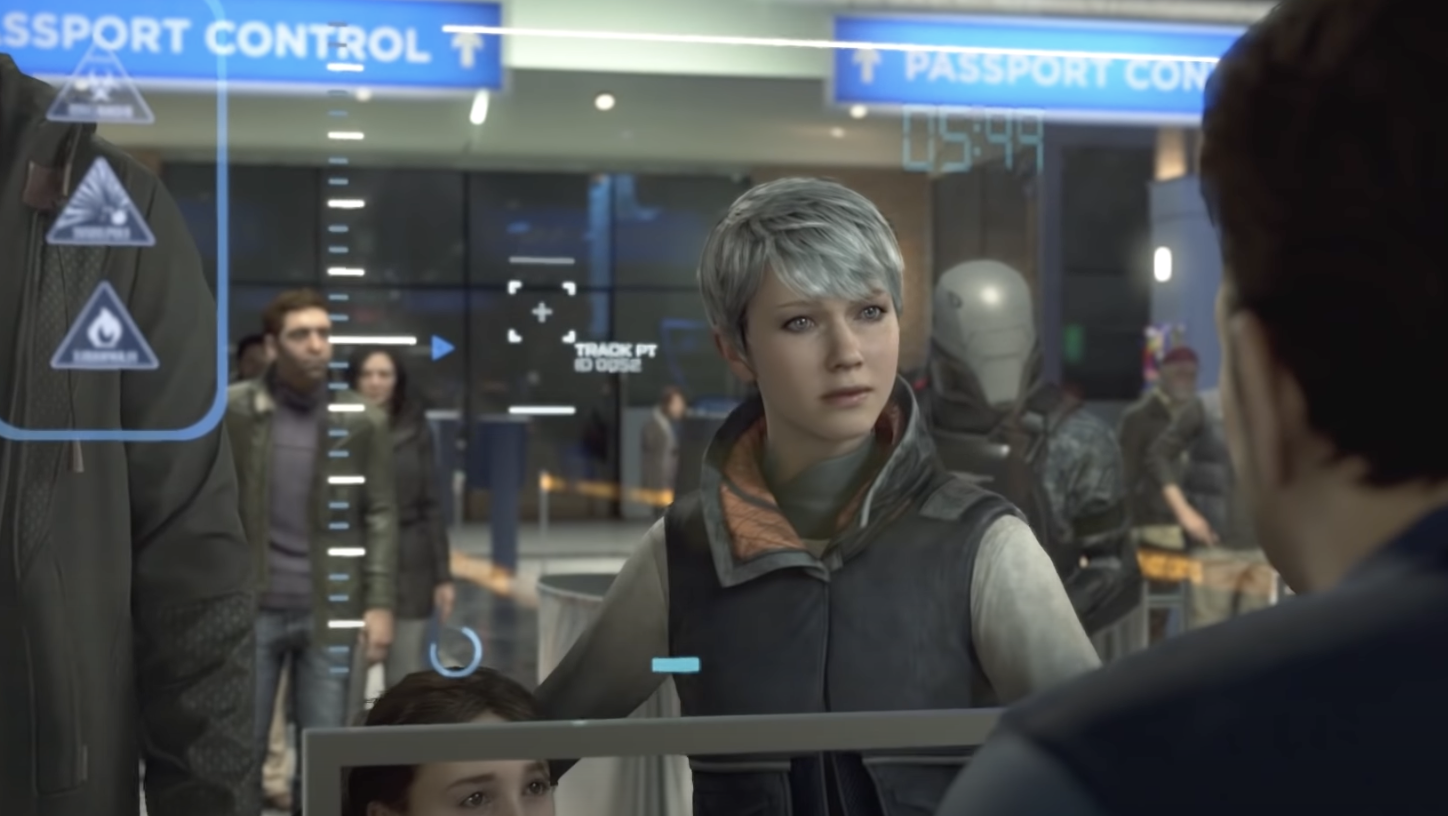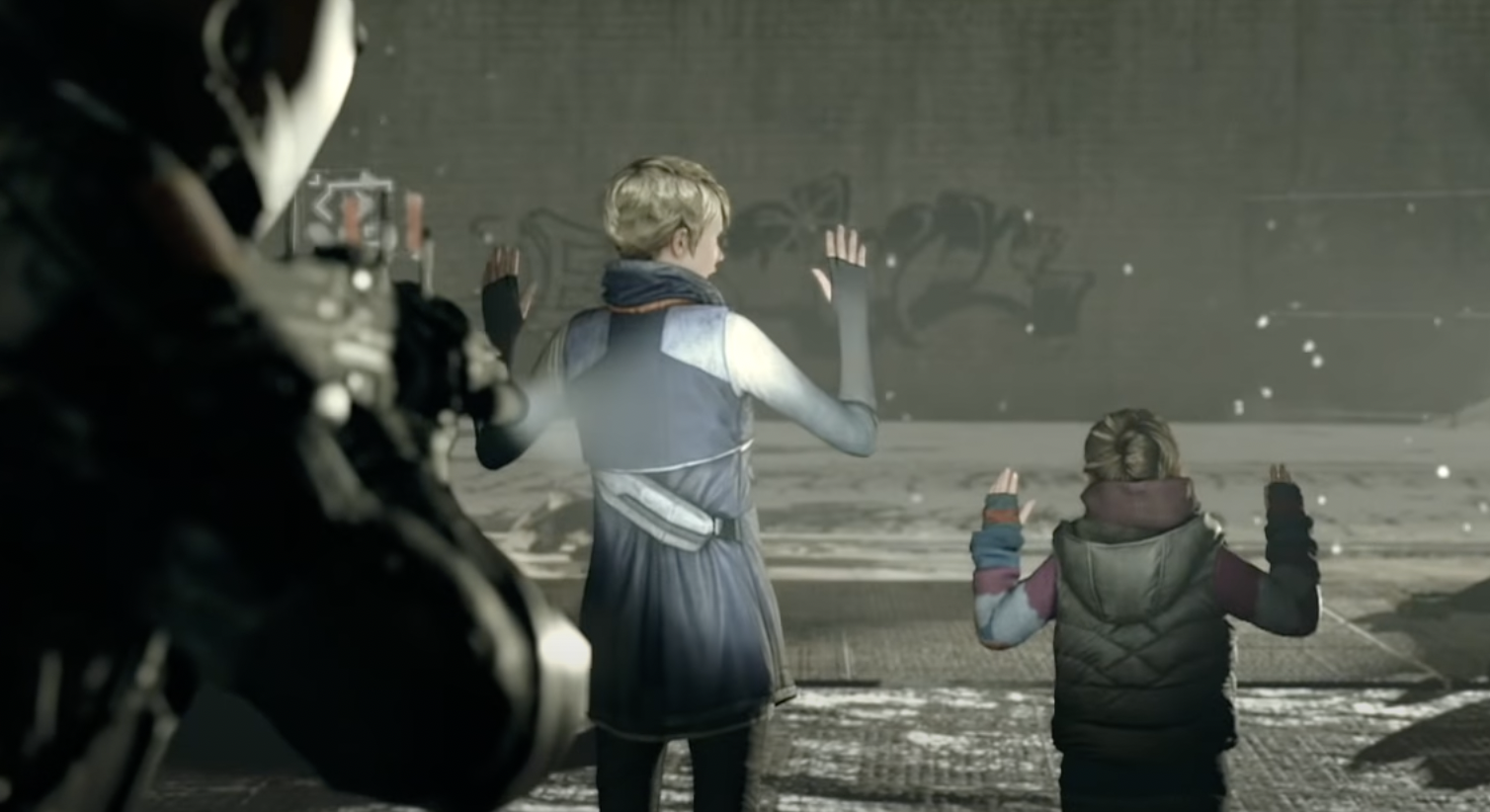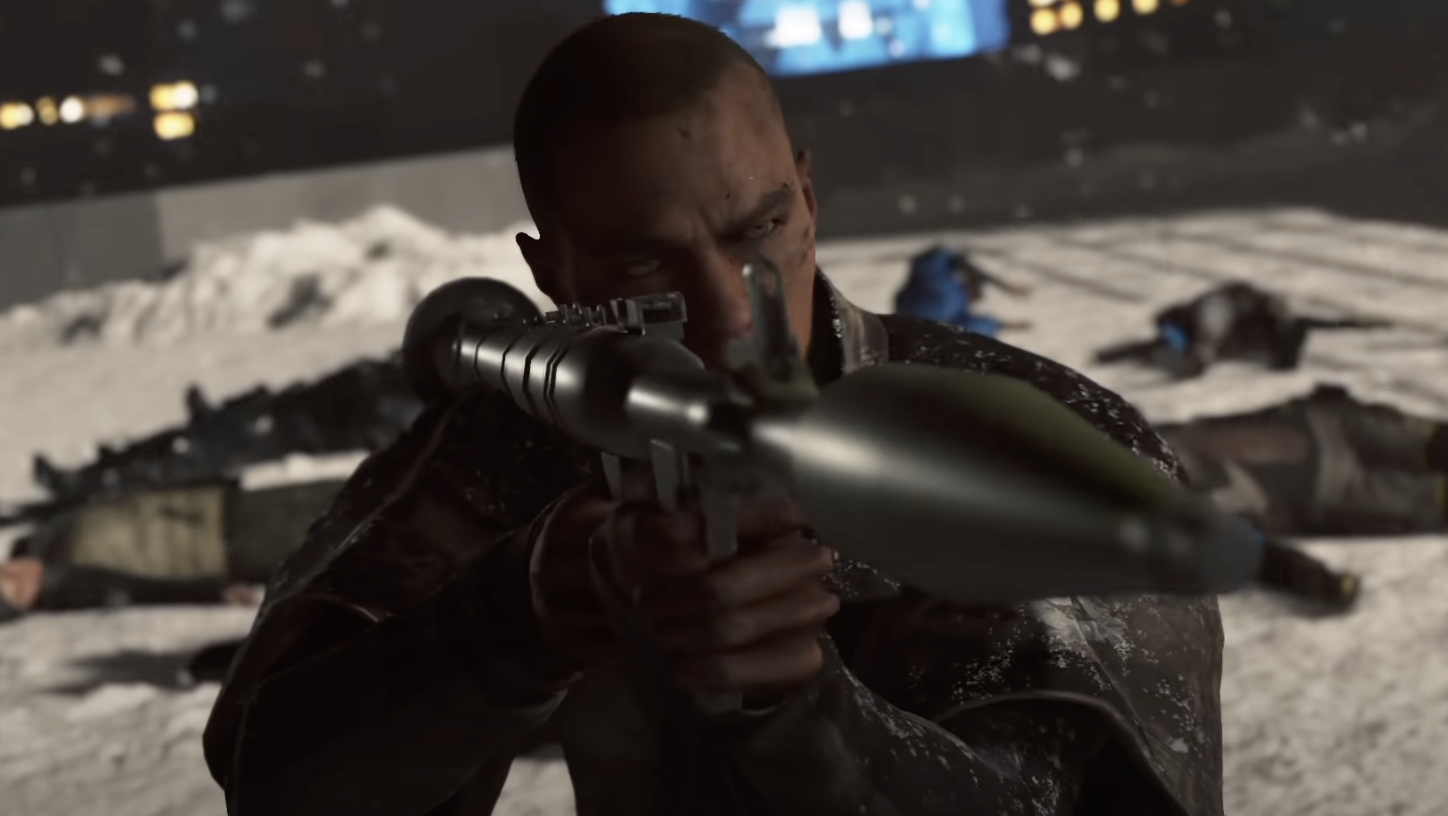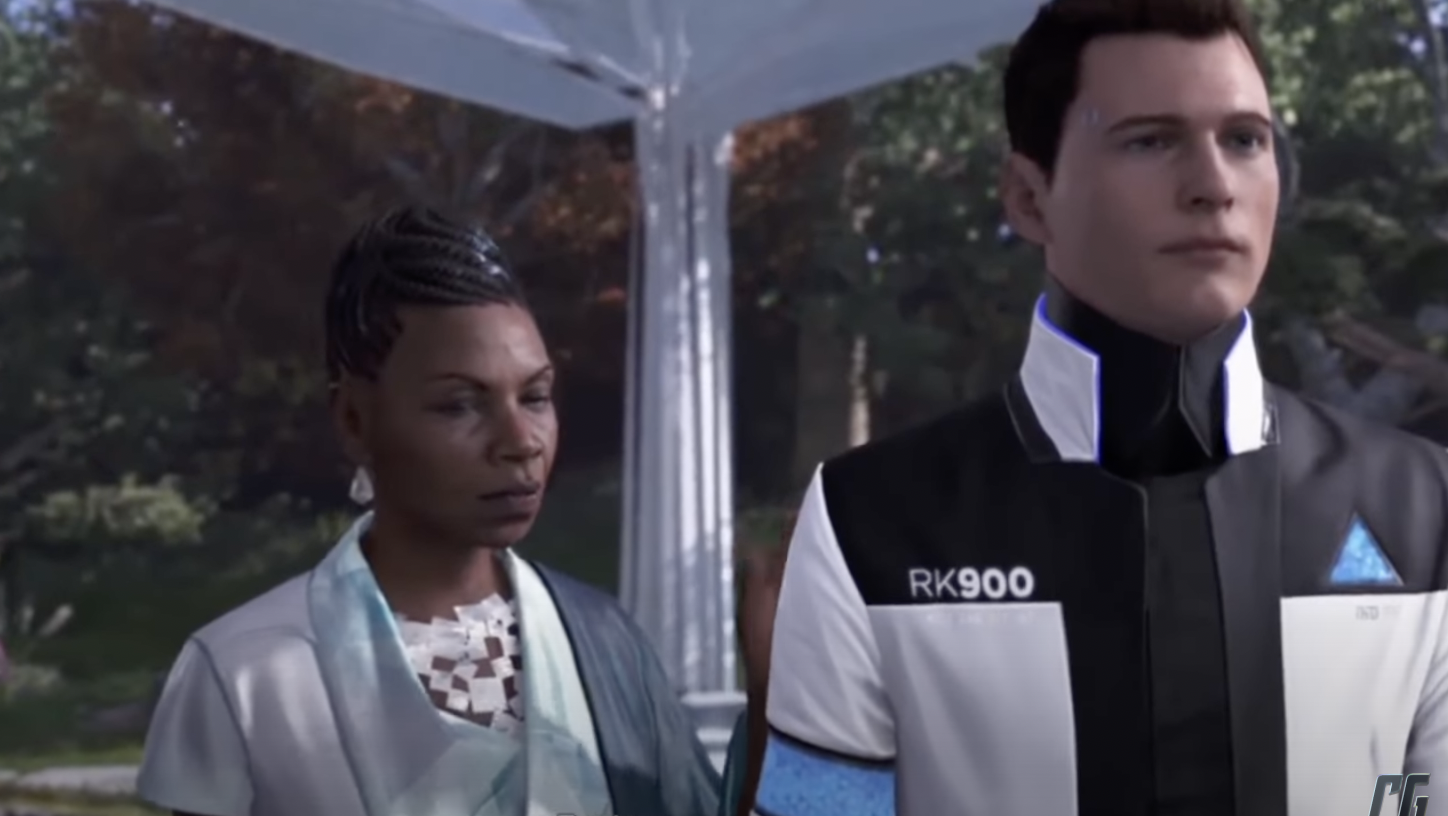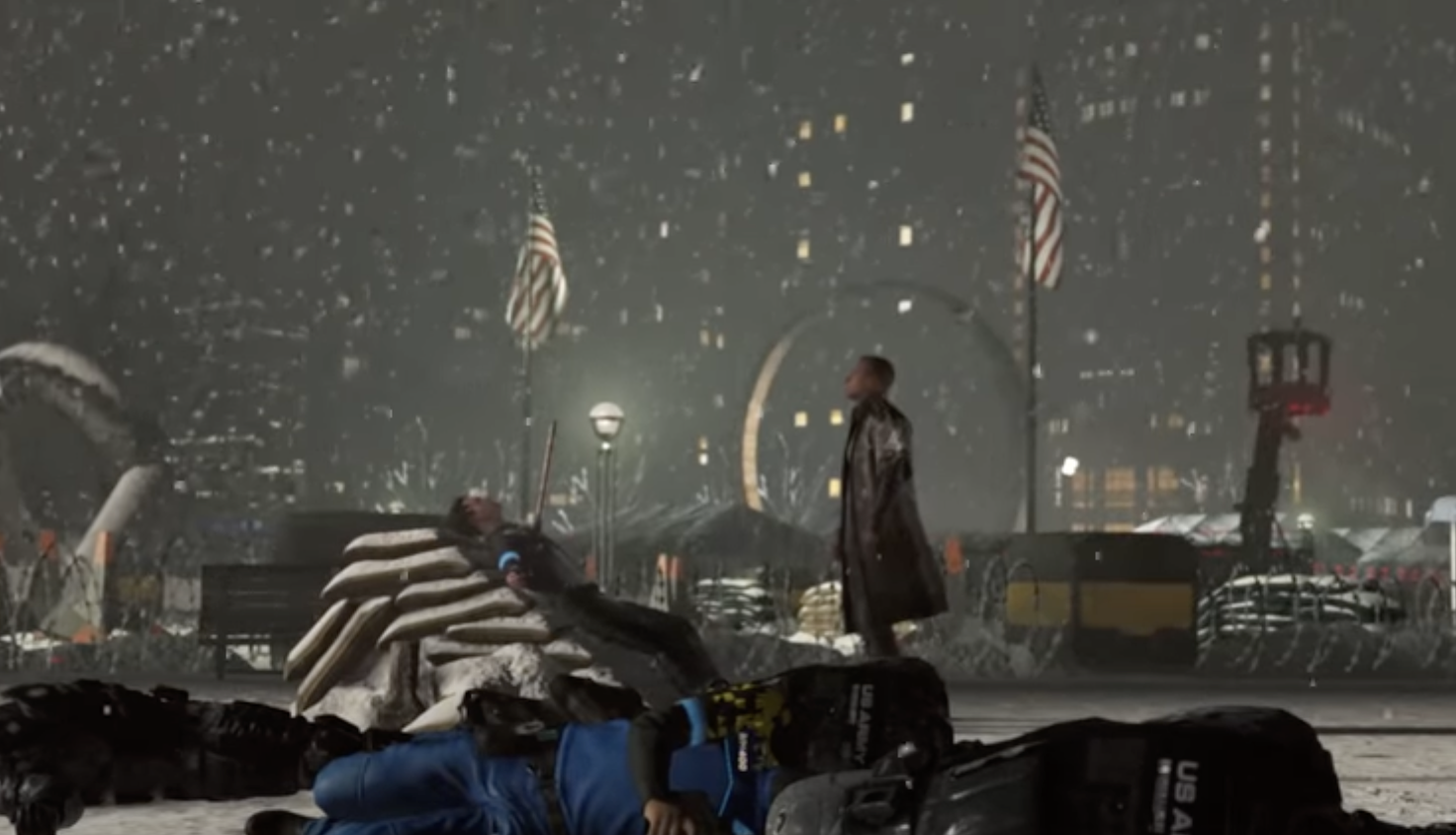One of the great accomplishments of Quantic Dreams game Detroit: Become Human is that its ending is truly in your own hands. There is no right way to play it, although there are optimal outcomes where everyone survives and achieves his goals. But does the best outcome yield the best story?
SPOILER ALERT: THIS ENTIRE POST ASSUMES YOU’VE PLAYED THROUGH THE GAME AT LEAST ONCE
The best outcome is the peaceful protest with Connor turned deviant and Kara, Alice, and Luther taking the bus to Canada. If you’ve played your cards right, everyone survives and the androids are free.
Just because it’s the best outcome doesn’t mean it’s the most compelling story. If you think about a movie like Star Trek II: The Wrath of Khan, you can imagine how less compelling the ending would be without Spock’s sacrifice.
In writing, when a character develops over the course of a story it’s called an arc. Arcs can be positive (Daniel and Miyagi in the Karate Kid facing the bullies) or negative (Walter White’s downward spiral in Breaking Bad). In the game, Connor and Marcus both have positive or negative arcs based upon your choices. Connor’s arc gets the focus in the game, though, and has the most impact on the story.
Positive Arc: Connor’s relationship with Hank causes him to become more human, ultimately joining with the deviants to help liberate them.
Negative Arc: Connor loses his humanity in his obsession to achieve his mission, becoming the villain.
If I put my writer’s hat on, scenes should be structured to invest us in Connor’s quest and show his arc. Characters should sometimes fail, and even die, to support that arc. The best story isn’t always the happiest one. Here’s the choices I’d make to have the best storytelling experience for the positive arc. I haven’t listed every chapter in the story because some, like “The Interrogation”, are more video-gamish where you simply need to get to the scene end without messing up. Instead, I’ve listed some of the key fragments that best build the story:
The Hostage:
Save the Fish
Our introduction to Connor nails two writing tricks right off the bat:
1) When we first meet a character, try to have him doing something unique to his personality or skills that immediately shows us something about him. For Connor, he is tossing a coin back and forth with android precision.
2) Try to have the character help or show a kindness to someone that he doesn’t need to help. This establishes that he is a good person to be admired and trusted. Putting the fish back in the tank is the kindness. For Connor’s arc, this shows that he is not just a machine, but has empathy.
Save the Policeman
A bleeding policeman lies outside on the terrace. If Connor stops to help, Daniel threatens to kill Connor. If you choose to ignore Daniel and help the policeman, you are rewarded with one of Connor’s great lines, “You can’t kill me, Daniel, because I am not alive.” Saving the policeman jeopardizes Connor’s mission, which is why this is a great “show, don’t tell” moment for establishing that Connor cares about people (and you will encounter the saved policeman later in the game when he thanks you during your investigation at the Stratford Tower).
Push Daniel and Yourself off the Ledge to Save Emma
There are three ways to save Emma. From a game standpoint, the best way is to talk Daniel into trusting you, which results in him releasing Emma. Here, you promise nothing will happen to Daniel…then you nod to the snipers when Emma is clear and they kill Daniel.
From an arc standpoint though, this establishes that Connor will lie to get what he wants. Connor also immediately turns his back on Emma and ignores her, his mission complete. The second option is to get close to Daniel and shoot him. Once again, Connor ignores Emma and walks away. It also undermines the scene as there is nothing special about Connor required for him to simply pull a gun and shoot Daniel. The third option is the best from a story standpoint: Connor tries to talk Daniel down, but Daniel flings himself and Emma off the ledge, Connor lunging for them in response. Connor manages to grab Emma’s hand and pull her back onto the ledge, but at the cost of sending himself and Daniel off the ledge. Here, Connor is the hero, sacrificing himself to save Emma. It’s also a nice reversal at the end of the story hook because you don’t expect the protagonist to die in the opening scene. It also saves Emma in a way that is unique to an android because Connor simply comes back after his death in a new Connor unit.
The Painter
Play Chess
Dave Cage, the writer and director of Detroit: Become Human, does quiet moments exceptionally well. Out of the options Marcus has to occupy himself while Carl has breakfast, playing chess is the interactive choice. Marcus joins him and gives him a life lesson as his mentor, which builds Marcus’s arc. Each of the other options, such as reading a book, also result in a life lesson from Carl, but in chess you are directly engaged with Carl. Chess also provides a nice allegory for the branching choices Marcus must make throughout the story.
Stormy Night:
Don’t Take the Gun
Kara’s character is so much more compelling and human when she is vulnerable and trying to protect Alice. The gun negates that vulnerability. When she encounters danger later on, such as the unstable knife-wielding android Ralph, the whole scene is less tense when you know Ralph has brought a knife to a gun fight. The other problem with taking the gun is that once you draw it, your only option is to shoot and kill Alice’s father, Todd. Kara is a caretaker and her role is to whisk Alice out of harm’s way, not leave a trail of bodies in her wake.
Fugitives:
Stay in the Motel
Out of the three overnight options, staying with Ralph is the most interesting, but from a character development standpoint it’s one of those choices that readers would shake their head at. A clearly unstable Ralph just held Alice at knife point. No mother would choose to let Alice sleep in his house (and if you’ve played the Ralph scene you know it wraps up poorly).
Having Kara back away and say “no, we should be going” gives readers confidence in her protector role. From a pacing standpoint, the motel gives the characters a little downtime to talk, and Kara closing the blinds and lying down next to Alice in bed is compelling. Stories need breathers from tension.
On the Run:
Fail at Sneaking Past the Police
As Hank and Connor close in on Kara’s motel room, Kara and Alice slip out and try to make their way to the train station, sneaking past police. If they succeed, they’ll quietly get on the train. If they fail, they’ll make a dramatic run for it pursued by Connor, trying to lose him in a nearly-suicidal rush across a high-speed autonomous vehicle highway. This scene is really great because it pits two protagonists, who are both good guys that you want to survive, at odds with each other. Connor should choose pursuit, since he always views his destruction as a temporary inconvenience. This is an interesting chapter where failing your objective (sneaking past the police) is much more interesting (and better storytelling) than succeeding. Readers like to know that characters can fail because it creates tension each time the characters are tested. It’s also one of the only story choices that bring Kara and Connor together.
The Nest
Save Hank
Most players pick this option because, well, we’re human and wouldn’t watch our partner fall to his death. Letting the deviant get away so Connor can save his partner is another moment to show that Connor values human life more than his mission. It’s also essential to developing a genuine friendship with Hank, which is what shapes Connor’s humanity. Now, if you are playing the negative arc version of Connor, this is the perfect scene to show that Connor cares about nothing but his mission (Hank pulls himself back up and is furious that Connor left him there to die).
Zlatko
Release the Monsters to Kill Zlatko
Zlatko is defeated either when Luther shoots him or when Zlatko’s tortured android mob beats him to death. When you write someone as despicable as Zlatko, you want more than a straight-forward “bang! you’re dead” ending. The android mob is fitting. Luther is a kind protector. Although him shooting Zlatko is suitable for his arc, him being spared the choice works better for the gentle android.
The Eden Club
Let the Tracis Go
A fun fact about this scene is that the actor who plays Connor and the actress who plays the blue-haired Tracy are husband and wife in real life. This is the first scene where Connor shows empathy for another android. I actually think it’s misplaced in story order. The Kamski scene, where Connor chooses not to shoot the Chloe android, should come first. After all, that should be an easier choice, since Chloe has done nothing wrong and is not a deviant. The next step up in empathy would be choosing to spare the Tracis, who have killed a human and are deviants. From a story pacing perspective, I feel the narrative’s transition to Connor letting deviants go here is a bit too abrupt. Connor hasn’t given any indication of showing empathy for androids before this point. This is why I think the Kamski scene should come first. There, Connor isn’t sure why he spared Chloe and Hank reassures him with “Maybe you did the right thing”. This would plant the seed that Hank approves and that sparing androids is the human thing to do.
The Stratford Tower
Simon Gets Shot in the Hallway
Readers feel tension when they’re not guaranteed everyone will be fine. Botching the guard ruse and getting Simon shot sets up a good scene where the protagonist’s plans have gone awry and he is trying to salvage them while facing a moral dilemma about how to handle the wounded man. It’s so much better than them all escaping. It frames a choice for Markus that is similar to many of Connor’s and if you choose man over mission you establish that Connor and Markus are on parallel arcs. You don’t get this character development when everything goes as planned.
Note if Simon doesn’t get shot in the hallway, he will get shot when the SWAT team bursts into the control room (assuming you didn’t shoot the fleeing human in the back when you took the control room). The outcome - wounded Simon on the roof - is the same - but the pacing is much better if it happens before they take the control room. If it happens after, they’ve already accomplished their goal and there is less tension.
You can entirely prevent Simon from being shot simply by killing the fleeing human, but for a positive Marcus arc this doesn’t work. Either way, losing a side character works much better than everyone’s plan going off without a hitch, as it raises the stakes by demonstrating that characters can die.
Meet Kamski
Spare Chloe
The choice here is dependent on Connor’s arc. If he is on a positive arc, then he must spare Chloe. I think Kamski’s empathy test is a great scene because it frames a central theme of the story as a choice for the main character.
Freedom March
Try Peace But Fight When Attacked
Here is where we need to decide if Markus will use peace or violence to achieve android liberty. I can tell you that readers like characters who stand up and fight. While characters who endure are admirable, we all endure to some extent in our everyday lives. We want to see characters do the things that we can’t. Although the pacifist path in Detroit: Become Human works out better for everyone, it’s the less compelling narrative. Markus should try to be peaceful, but when the police start killing people around him, he needs to fight. Once in the fight, he should fight to defend himself and let the police disengage when they flee. If you choose to fight, this is an exciting action scene with epic music. In terms of story mechanics, fighting is the point-of-no-return door that a main character must open to progress the story. If you back down from the police, you are delaying opening that door and pushing it to a later point in the story that feels out-of-place for readers.
Crossroads
Connor becomes a deviant and Kara, Alice, and Luther are captured
Connor has been on a humanity arc this entire time and this is the place where it is realized. Personally, I think the positive arc for Connor is the better story. Seeing him switch sides and join Marcus is a crowd-pleaser because readers are invested in both characters and the only way they can both succeed is if they are on the same side. The negative arc version of Connor works well as a story also, setting the stage for a final battle between Connor and Marcus, but that feels predictable compared to the twist of them teaming up.
Kara, Alice and Luther will either escape, be captured, or be killed. Escaping will send them on a route to the Canadian border, which will have its own drama but ultimately remove them from the plot. Other than their brief interaction with Marcus at Jericho, this will reduce Kara and Alice’s arc to a background event. Personally I can say that I went back and replayed the story so I could choose to get them to Canada because I was invested in the characters and wanted them to have the happy ending, but in retrospect the plot works better if they don’t go to Canada.
If they get killed trying to escape Jericho, the scene where Kara falls to her knees holding a dying Alice, both shutting down frozen in that pose, is heartbreaking and powerful. But, they are major characters, and their deaths here do not have a purpose other than to pull tears.
The best story is for them to be captured, as this will up the stakes for the finale. From a plot structure standpoint, this takes the three plot threads of Kara, Connor, and Marcus, unites them at Crossroads, and binds them all to the outcome of the Battle of Detroit.
Night of the Soul
Liberate the Camps by Force
Night of the Soul is a very classic scene showing the protagonists overcoming their self-doubts the evening before the final confrontation. Here you have one final decision to pursue either a peaceful standoff outside the camps or a violent liberation. Although the peaceful avenue is admirable (even if the actual kiss-the-girl and Les-Miserable endings for it are a bit cheesy), the problem is that the narrative has piled endless atrocities upon the heroes, including building actual death camps.
“Do you hear the people sing? Singing the song of angry men…” Oh wait, wrong story.
Readers don’t want passive responses. If you have a character pushed down throughout a story, it is a setup for him to take a stand.
Battle for Detroit
Save Hank
At this point, Hank and Connor are friends, and Connor must choose the human life over the mission. As an aside, I love that this scene has fun with the sci-fi trope of “ask me a question only the real Connor would know”.
Alice, Kara, and Luther are in the Recall Center
The recall center is a difficult scene to both watch and play, yet Alice and Kara ending up here makes for a perfect ending since Marcus is no longer just liberating nameless androids but characters you are invested in. Alice, Kara and Luther must stick together and show courage in a hopeless situation. It is possible for them to engineer their own escape, but it’s better storytelling if their freedom is tied to the final battle’s success. In the end, they will be saved.
The actual battle itself is a bit more video-gamish where the choices mainly affect whether you lose any friends and win the fight. It’s a great bit of action to play through, however, and feels suitably desperate and epic for the liberation of the camps.
Note you will have radically different endings if you choose other arcs for Marcus and Connor. The negative Connor arc works well in that he must fight Marcus (or North) and either fail (because he is the villain and we want him to fail, allowing the true hero to succeed) or he successfully kills Marcus and squashes the rebellion, only to realize his obsession has cost him everything (when Amanda coldly states he will be decommissioned and replaced by a better model, treating him as he’s treated the other androids throughout the story).
If playing the negative arc, Hank will try to stop Connor just before the final battle. Here, Connor should kill Hank by dropping him from the roof. It’s the point-of-no-return scene for Connor, where he has abandoned his last shred of humanity and fully committed to the final battle.
Here, he is firmly the villain who must be defeated by Marcus.
All in all, I’m thoroughly impressed with the writing and direction in Detroit: Become Human. The fact that I finished the story and I’m still learning from how it was assembled speaks highly of it. I hope you enjoyed it as much as I did, and I’m curious to hear your thoughts.

